
Interview with Ayala Sender
Artisanal Natural Perfumer from
Ayala Moriel Parfums
by Raphaella Brescia Barkley
Ayala, everyone I talk with tells me that you have just some of the most beautiful natural perfumes on the market and that you are well known for making beautiful all-natural perfumes as well as your contribution to the art of perfumery - it sounds as if you have worked very hard to accomplish this -so I would like to start off by saying congratulations.
Thank you! I’m very happy that perfumistas are enjoying my perfumes. Allow me to use this opportunity to thank all of my customers for loving and enjoying my perfumes, supporting my little perfumery and spreading the word about what I do. It really wouldn’t be possible for me to continue making perfumes without you. And thank you, Raphaella, for putting me in the spotlight here on Sniffapalooza Magazine.
Your mission is to bring us joy through the sense of smell – with beautiful, inspiring, sensual and evocative all-natural fragrances, please tell us about that and why it is important to you-
Perfumes and olfactory experiences bring me joy. Creating perfumes brings me joy. And even more so – sharing my passion and knowing that what I do brings beauty and joy to other people’s lives. It’s as simple as that.
I am fascinated by your collection of fragrances titled “Language of Flowers, the Soliflore Collection”, because I love flowers and true floral fragrances, please tell us about those.
Flowers always fascinated me. As a little girl, I would admire and study their structure,
shapes, colors and patterns. I always felt that they had their own language. In a sense,
the soliflore collection is the grown-up incarnation of this flower obsession; only this time,
the emphasis is on the olfactory language rather than the visual. Each soliflore is a
micro-cosmos with its own mood, texture, rhythm and memories.
I also understand that you use the highest quality of natural essences that you can find to make beautiful perfumes…
It is still a mystery why certain note combinations smell a certain way, or why perfumes by different perfumers carry their makers’ unique “fingerprint”. But one thing we know for sure: if you take care of each and every part of the process - paying attention to every detail will in return give us a high quality perfume. Every aspect of the process – from growing and picking the plants, distilling, blending, maturing and bottling has an impact on what you are experiencing in the finished product.
While I have very little impact on how the plants are grown or distilled, I have the power to
make the choice of where I invest my money. I choose to use the best quality that I can find
and in that way I am investing in the future of quality raw materials. It is my belief that in those seemingly small everyday decisions lays the key to making the world a better place: my customers are happy and continue to support what would otherwise be dying arts – aromatic agriculture, distillation and of course - artisan natural perfumery.
You also have perfumed tea with some of the fragrances! Tell us about that.
These teas were made in joint collaboration with Inner Alchemy Tea Co. – a Vancouver-based tea company owned by Dawna Ehman. Each tea is inspired by a perfume in my line (and carries the same name) and in a sense is a “translation into tea” of that particular perfume. Dawna is an exceptional lady with integrity and passion that shows in everything that she does. Working with her has been both an incredible learning experience and a real treat. And I am very happy with the fruits of this collaboration – 4 amazing perfumed teas (3 of which are made of 100% certified organic teas and herbs).
The term “perfumed tea” requires clarification. Contrary to one’s intuitive interpretation to the term, it is not as literal as it may sound. These highly fragrant and flavourful teas are neither spritzed nor dabbed with perfume; the process in which they acquire their exquisite perfume is pure and unprocessed.
In tea culture, the term “Perfumed Tea” refers to tea that received its unique fragrance and taste from authentic aromatic plant matter. As opposed to “aromatized tea” which is flavoured with a combination of artificial and natural flavourings. In Ayala Moriel’s Perfumed Tea Series, the tea leaves are perfumed by the addition of dried aromatic and flavourful botanicals. For example, our newest tea, Roses et Chocolat, is perfumed with rose petals and cacao nibs; the rooibos in the Immortelle l’Amour tea is perfumed with sliced vanilla bean (they even leave vanilla specs at the bottom of the cup!); the yerbamate and green tea in Gaucho are perfumed with lemongrass, damiana and clover blossom; and the Japanese Sencha green tea in Tirzah is perfumed with a floral bouquet of linden blossoms, hops blossoms and osmanthus flowers.
You truly have an amazing selection of fragrances with names such as: Bois d’ Hiver, Espionage, Film Noir, Fête d’Hiver (Winter Festival), Autumn, Song of Songs and so on…where do you get your inspiration?
The perfume names are an inseparable part of my creative process. There is a story behind each perfume and its name - sometimes too long to tell and better told by the fragrance itself. More than anything else, people and nature inspire me. Some even quite obviously so, bearing a person’s name (i.e.: Tamya, Megumi, Yasmin, Zohar), a season (Autumn, Fete d’Hiver, Bois d’Hiver) or a particular fragrant flower (Lovender, Rosebud, InCarnation, Yasmin, Viola). Inevitably, I’m profoundly inspired by my own culture and personal experiences. Many of my perfumes have roots in the Middle Eastern (Finjan, Razala, Sahleb) and Jewish cultures (i.e.: Song of Songs). Other names are more subtle and the story behind them is quite personal, such as Indigo, which was originally created for my mom even though the name doesn’t imply so.
So not only do you produce floral scents you have a full range of Orientals and Chypres, Fougère, Leathers, Fougère Ambery, Fougère Fresh and so on, this is very fascinating because I have never seen a natural perfumer with so many types of fragrances-Please tell us about this-
The concept behind Ayala Moriel’s ready-to-wear line is to offer customers the option of a personal scent – an alternative to the more lengthy and costly process of creating a custom scent. I believe there is something for almost everyone in this collection; at the same time, it’s very unlikely that you will smell like everybody else even with my ready-to-wear, because they are so unusual and not widely distributed. Also, there are so many to choose from that even if all your friends like my perfumes you will most likely choose different fragrances.
The collection also represents a full scope of what I can do using only naturals, so it gives a very good sense of the possibilities for private label clients who want to create their own all-natural fragrance line or scented body or home products. In a sense, the collection is my portfolio and a showcase for natural perfumery: They are not just products for sale, they educate the public and promote the concept of natural perfumery by showing you that despite its significantly limited palette (i.e. around 300 notes as opposed to several thousands used in synthetic perfumery) – the sky is the limit with what you can do.
Tell us about your fragrances named after novels: l'Écume des Jours and l'Herb Rouge.
Boris Vian was my hero for the longest time not only because of these two stunning novels and their poignant sense of truth and beauty; but also because he was what I always aspired to be – a Polymath*. These two books are my favourite (not much of his work was translated to other languages though). l'Herb Rouge means “Red Grass” and tells the story of two men who built a time machine and their search for self-redemption through self-destruction. The main character, the engineer and inventor of the time machine, travels to his own past through the time machine, each time shedding another layer of his memory until none is left. When creating l’Herbe Rouge, I was searching for a scent that will stir within me a deep, unexplainable memory and emotion. Early on I knew it would be a Fougère. Something about the depths of hay, oakmoss and patchouli resonates very deeply with my own childhood memories - and along with lavender, lemongrass, juniper and cloves it created what I felt was the right mood – mysteriously familiar.
l'Écume des Jours was far more challenging. Perfecting it span over the course of 4 years. I really wanted it to be as perfect as the book is. I don’t know that I’ve succeeded but I feel that it represents the full range of happiness and melancholy that life’s beauty encompasses, and the magical mood of the book. In l'Écume des Jours, Vian created a universe that abounds only to the rules of love and beauty. Therefore, it starts out perfectly good and grows to its height only to completely collapse and deteriorate into a completely unhappy ending. It may sound pessimistic but it represents a profound truth if you think about it. Being aware of the cycles of life, it is only from the state of complete death that new life arises. Perhaps the following will make more sense especially in the context of perfumery - l'Écume des Jours “sketch” which I’ve posted on SmellyBlog:
Please tell us about one of your new perfumes-Immortelle l'Amour.
Immortelle l’Amour was launched in winter 2008, so it really isn’t all that new. Since than I’ve also launched Vetiver Racinettes (in the summer), a vetiver soliflore that is rich and complex with many different kinds of vetiver from different parts of the world (Haiti, Sri Lanka, India, Surinam, Indonesia) as well as some artisan distillations of vetiver (ruh kush, attar mitti) combined with spices to create a vetiver that has hints of cooling root beer notes.
And this month (October 2008) I’m launching Sahleb, a limited edition, which is far more limited than I ever intended it to be as the particular type of orris butter I used (a high quality Florentine iris with 15% irone – the molecule that gives iris its creamy, violet-like fragrance). I am hoping to get more of this unique iris in the future and make another batch of this buttery-starchy dessert perfume. Hopefully with your support I’ll be able to source more, and if the demand for Sahleb remains, it will become part of my permanent collection (I think it deserves it!).
Editors insert: From the website:
Ayala Moriel is proud to introduce: Sahleb - the perfume version of a Middle Eastern winter favourite. This scrumptious pudding beverage, flavoured with rosewater and crushed mastic resin is offered by street vendors straight from a copper caldron throughout the cooler seasons across the Middle East. Served warm and topped with coconut, pistachio and cardamom, Sahleb has become an essential part of winter and a way to make even the gloomiest street corners cozy and home-like.
The creamiest orris root from Italy was used to create the smooth texture of this starchy and soothing pudding-beverage. A hint of the finest rose otto from Turkey, coconut and butter essence and crushed mastic resin complete the exotic flavour, and finished with a hint of vanilla and nutty ambrette seed Sahleb is ready to seduce you into winter!
Top Notes: Coriander Seed, Rosewood, Mastic Resin
Heart Notes: Orris, Rose Otto, Butter
Base Notes: Ambrette Seed, Coconut, Vanilla Absolute
I understand that you had a fragrance that launched this past spring called Gaucho that has animalistic-leathery undertones; can you tell us about that?
Yes, Gaucho launched in spring 2008 with an accompanying perfumed tea and was also featured just recently on Body + Soul magazine.
I started working on it since my very beginning in 2001, inspired by the mood of the Steely Dan album. I wanted to create something bold and unusual that evokes the feel of expanded open space and the melancholy of human solitude against the vastness of nature. Gaucho is one of the perfumes that I have been most open about it’s process and wrote about it quite in detail over my blog in a series labeled “Gaucho’s Journey”.
There must have been a defining moment that led you to become a perfumer. How did that happen? What led you to this journey?
My dream started when I was helping a family from the village for a day in their lemon verbena harvest. Even after spending an entire day removing the dried leaves from their stems (which was quite painful actually!) I felt rejuvenated and extremely happy just because of the beautiful smell. It made me dream of having a soap factory that makes only lemon-verbena scented olive-oil soaps.
Of course I never did do exactly that; but thankfully there was another defining moment in my life: moving to Vancouver - a city so moist and dull at the time (1998) in both culture and fragrance that I had to recreate my own scented environment and inject some perfume to it in order to survive emotionally. Many of my perfumes represent scents that I miss in my home country, where every street corner is fragrant (not always a good thing but it sure makes things more interesting!) and there is a huge variety of fragrance in the native flora. Here in Vancouver it’s all coniferous and maybe on a slightly warm day (it never gets really warm here) you could smell hints of salt from the Pacific ocean or whiffs of cherry blossoms in the spring – but you have to try really hard to notice them.
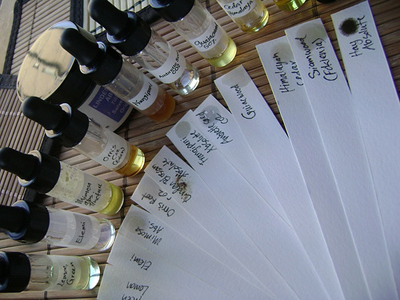

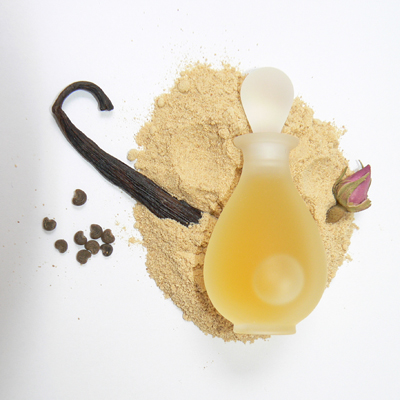
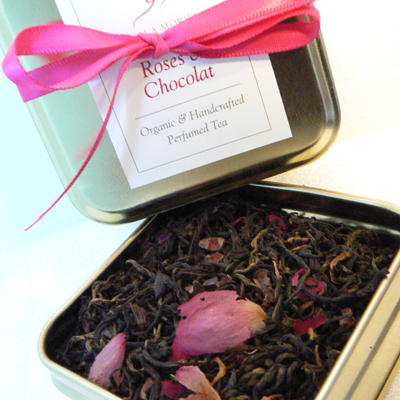
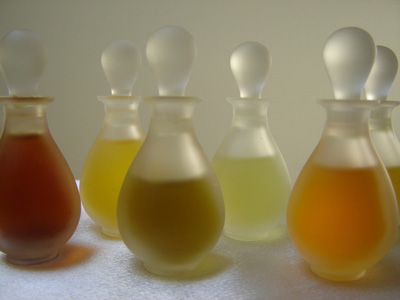

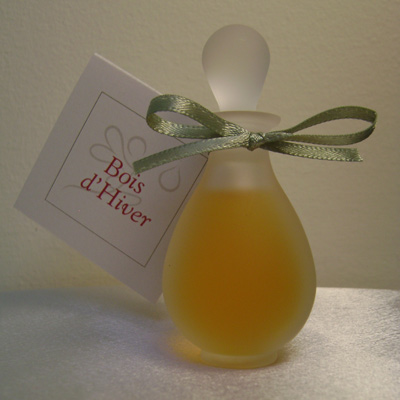
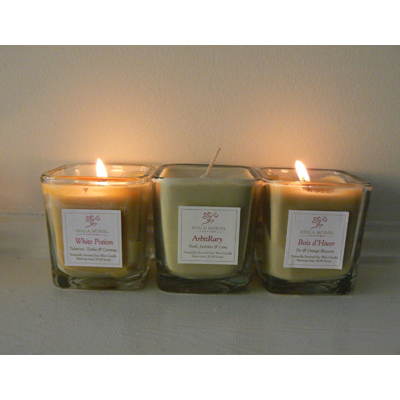
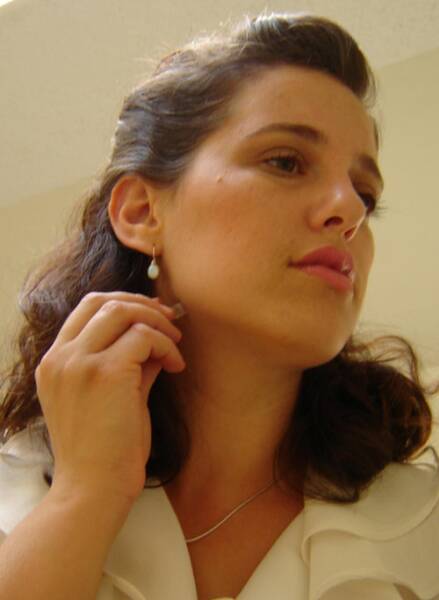

Your course in Natural Perfumery sounds amazing, has that been successful? It looks very through and I wished I lived closer to you as I would sign up immediately but you do also offer a Correspondence Natural Perfumery Course, correct?
The Foundation of Natural Perfumery Course is a two-year program with an apprenticeship option to follow the completion of the course. We have now started the second term of the course, so everything is still very new. There are new students signing up every term, but I try to keep the group small, so I never take more than 10 students at a time in total for all levels (correspondence students included). The course is accompanied by comprehensive book, hands-on exercises and theoretical assignments. The assignments are spaced over each term to encourage a healthy studying pace. Although you will most benefit attending at least one or two sessions a year, the course is designed as a correspondence course as well, laid in a format very similar to that of Open Learning universities: there are monthly tutoring sessions over the phone, and assignment are handed in on a regular basis for feedback via mail and email. It is a very personalized program, so each student gets one-on-one time and their unique issues and questions addressed to help them achieve their professional goals in the field Natural Perfumery.
Your web site offers all sorts of ways to purchase fragrance, there are different types of sample packages available as well as perfumed pendants, poison rings, roll ons, travel size perfumes, gift sets, bottles, Crème Parfum Silver Pendant and parfume Parfum Extrait, how on earth do you keep up with it?
Just one bottle at a time… Really. Perfume is an art that requires patience, precision and perseverance. For me to sustain and nourish what I believe in, I must not sacrifice quality for the sake of profitability or mass quantities. The key for me is in dedication and organization, and also keeping a balance in my life as a whole. Thankfully, my business is growing organically, so I never bite more than I can chew; and I gradually learn as I go how to run the business more smoothly as it grows.
Logistically speaking, I always make sure I have a sufficient supply of my top-selling perfumes, and at least few bottles of each of the other fragrances in stock; while the pendants and poison rings are only filled on-demand. All the perfumes and solid perfumes are hand-made and hand-packaged by myself. The scented candles and perfumed teas I leave to my experts to make (Inner Alchemy Tea Co. makes the teas and Gabriel’s Aunt makes my candles), and this way I can be sure the quality is highly maintained and at the same time I’m also supporting two amazing businesswomen!
Is there anything else you would like our readers to know about you or your fragrances that we have not discussed?
Yes, I would like to mention two things: my new candle collection and the Holiday Soiree on December 21st. Other than that, I invite you all to visit SmellyBlog for educational articles about raw materials and the art of perfumery, as well as updates on everything that is new at Ayala Moriel.
A little more about my new candles:
ArbitRary soy wax scented candle was launched in the summer and was so successful, I am launching three new scented candles are added to the collection this Fall: Bois d’Hiver, White Potion, and the third candle Roses et Chocolat launched in the New Year.
Bois d’Hiver (with Fir & Orange Blossom) is an unusual interpretation of a holiday candle. While it has some of the classic winter holiday elements – spices, coniferous and incense notes – it is everything but cliché. Lighting it is an unusual experience, combining the peacefulness of a walk in the woods in the winter, and the meditative serenity of an incense-laden church.
White Potion (with Tuberose floral wax, Tonka bean & Coconut) is a truly luxurious white floral candle, with the emphasis of tuberose with some accents of jasmine and ylang ylang.
The candles are hand-blended and hand-poured exclusively for Ayala Moriel by Nikki Sherritt of Gabriel’s Aunt http://www.gabrielsaunt.com/ in Seattle.
Lastly, I would like to invite you to my Holiday Soiree on December 21st (6-11pm) at Ayala Moriel Studio in Vancouver. This is the first night of Hanukkah, so of course we’ll light the menorah, and some scented candles too! In addition to the beautiful perfumed teas and flower-scented chocolate truffles – the culinary highlight of the event will be Sahleb – the pudding beverage that inspired my new perfume, imported straight from Jerusalem!
* Vian was an engineer in his profession and lived in the Germain des Pres quarter in Paris, the centre of the Existentialist movement to which he belonged. He wrote novels, acted, sang, played New Orleans jazz on his trumpet, wrote songs and lyrics (and jazz reviews), released his own records, invented and died at the ripe age of 39 from sudden cardiac death when watching the film adaptation of his “J'irai cracher sur vos tombes”.
Can you tell us what Natural Perfumery means to you?
By definition, using materials that are as close to the source as possible and no synthesized molecules for creating perfumes. For example: vanilla absolute is a highly concentrated fragrance of vanilla beans and is natural; however, the scent of vanillin, that was synthesized from either petroleum or wood source (via guiacol or lignin waste, a bi-product of the paper industry) has very little resemblance to it’s source. Working with naturals means being closer to nature and working with raw materials that are more genuine and less refined or processed. Some of them are literally raw (i.e.: balsams).
To me personally – natural perfumery is an art, a profession, a branch of modern perfumery and a continuation of an ancient art form. This is my preferred medium to create and express my ideas and emotions. I think everyone has a story to tell, but we use different languages to tell that story. Natural perfumery is my language of choice.
What are the most popular fragrances out of your line?
Espionage, Tamya and Ayalitta, in this order at the moment; Tamya often jumps to the top.
Were you ever inspired by any one perfumer?
I find Edmond Roudniska’s innovativeness and Jacques Guerlain’s poetic approach to perfumery most inspiring. If they were alive now I will do anything to have them as my teachers. Thankfully, their perfumes are still alive and I spent years (and will spend many more) studying them.
I also admire Ernest Daltroff and Ernest Beaux, but I don’t think they’ve influenced my work as much.
What was your favorite fragrance growing up?
I grew up mostly surrounded by the scents of nature – wild hyssop, sage and labdanum growing on the mountains, herding goats, fresh lemon verbena, spearmint and lemongrass from the garden and everything that nature had to offer in the Western Galilee.
My parents were hippies and my mom has anosmia, so even deodorants were foreigners in the house until me and my brothers decided to bring them in (they were regarded unnecessary and unhealthy by our parents but we would sneak them into the house when they didn’t notice).
The perfumes I was exposed to were the ones my grandmother wore, most significantly her life-long signature Vol de Nuit (when this was nowhere to be found she switched to Shalimar for a few years until Guerlain smartened up and offered it again in a wider distribution – at least in the eau de toilette) and AnaisAnais. The first perfume I enjoyed wearing was an AnaisAnais solid perfume knock-off that my grandmother brought from Greece. It smelled nothing like the original, and I loved it much better. I still have the little porcelain vase it came in, with little seahorses and mythical creatures hand painted on it. But the most influential perfume on me was Abishag, a long discontinued perfume that was exclusive to the Israeli Museum in Jerusalem. It was the first perfume I bought for myself, at the ripe age of 17. I lived off miniatures, saving up for the big ancient Roman-glass bottle they had, but by the time that happened it disappeared. Abishag was a resinous cross between chypre and oriental, with top notes that were sharp and almost revolting (they smelled like a certain species of little black beetles, kind of apple-like and quite overwhelming)– the most similar thing to it are the top notes of Private Collection. The base was very rich with labdanum and just magical. The closest thing to it is perhaps a combination of Tabu and Villoresi’s Incensi, layered with Private Collection on the top. I never managed to find out who the perfumer was or any other information about it.
What is the most amazing fragrance you have ever smelled?
Earth after the first rain, carob blossoms, beach lilies against the salty scent of the Mediterranean sea in late summer, fresh guava that was just picked from the tree, fresh lemon verbena leaves, and orange groves in full bloom.
Which famous fragrance do you wish you had created?
Dioirissimo, Le Parfum de Therese, Vol de Nuit and Mitsouko.
Why do you think so many women and men are part of this fragrance explosion, especially the niche and natural trend?
In a world were everything is mass produced in mind-boggling quantities, high-quality perfumes provide a way to tune into one’s emotions and find self-identity and a sense of connectedness and well-being; of being connected to our internal world and feelings by concentrating on something that is distinctively different from everyday life. When it comes to natural perfumery – the perfumes also connect us to plants and nature. Natural perfumery is a very accessible way to benefit from the beauty and healing powers of plants.
